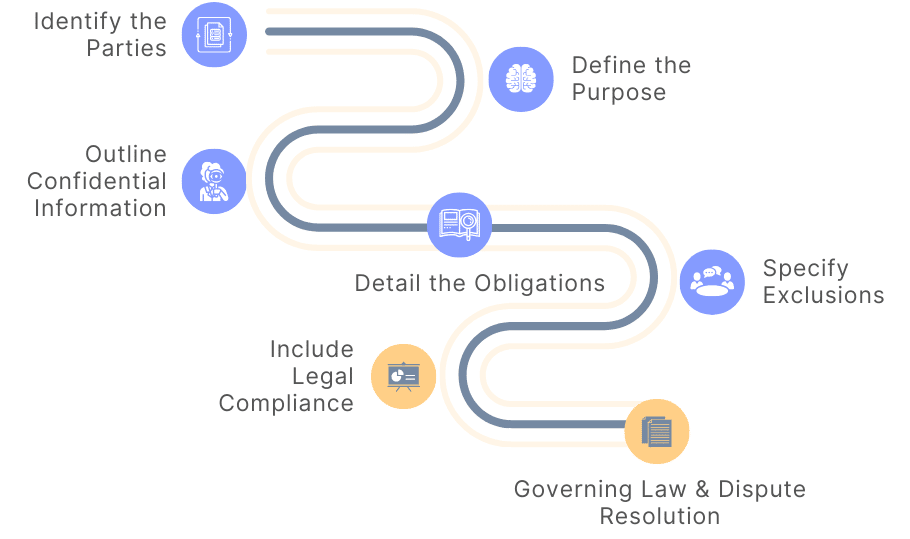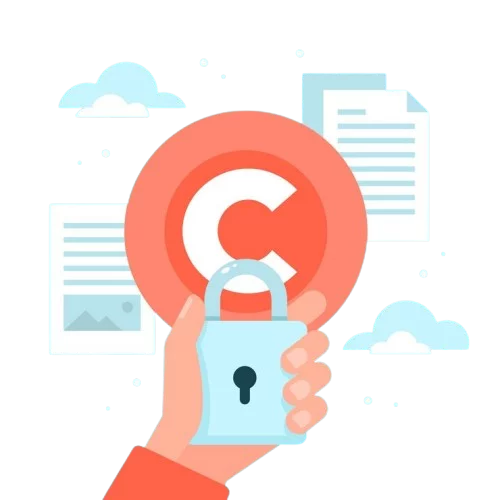Protecting sensitive information is a priority for businesses and individuals alike. Privacy Disclosure Agreements are legal instruments that ensure the confidentiality of personal data and proprietary information shared between parties. Whether it’s between companies, clients, or business partners, privacy disclosure agreement play a crucial role in maintaining trust, safeguarding privacy, and preventing data breaches.
In this blog, we will explore the essential aspects of Privacy Disclosure Agreements, including their definition, key components, and types. We will also discuss the importance of these agreements in various industries, along with the potential legal implications for failing to comply. Additionally, best practices for drafting and implementing privacy disclosure agreement will be covered to ensure data protection and regulatory compliance.
What is a privacy disclosure agreement?
A privacy disclosure agreement is a legal contract. It is used to protect secret information shared between two or more people or groups. The agreement explains what each party must do to keep the sensitive information safe. It usually says what kind of information is confidential, how it can be used, and what happens if someone breaks the rules.
These agreements are important for building trust and being open. They make sure that everyone understands their duties about data privacy. By clearly stating how information can be used and what is not allowed, privacy disclosure agreements help create a culture of respect for confidentiality and responsible handling of data.
Understanding Privacy Disclosure Agreements
Privacy disclosure agreements help protect sensitive information in many areas, like business deals and healthcare data sharing. They create a clear understanding between the parties about their duty to keep information confidential. This reduces the chances of sharing it without permission or misusing it.
These agreements also offer legal options if a breach happens. They explain what can be done and what will happen if someone does not follow the rules. This helps the disclosing party and shows why data protection is so important.
Key Components of a Privacy Disclosure Agreement
A good privacy disclosure agreement includes important parts that help make things clear, legal, and protect data. These parts work together to handle sensitive information well.

- Definition of Confidential Information: This section clearly outlines what qualifies as confidential or private information, including data such as trade secrets, client information, or proprietary technology. It ensures both parties have a shared understanding of the scope of the protected information.
- Obligations of the Receiving Party: This component specifies the responsibilities of the party receiving the confidential information. It often includes limitations on disclosure, restrictions on use, and the duty to protect the information using appropriate safeguards.
- Duration of Confidentiality: This clause details the length of time the receiving party is required to keep the disclosed information confidential. It may extend beyond the term of the agreement, depending on the nature of the information.
- Permitted Disclosures: This part outlines any exceptions where the receiving party may disclose the confidential information, such as in response to legal requirements or to authorized employees who need to access the information for legitimate purposes.
- Consequences of Breach: This section describes the penalties or legal remedies that may arise in the event of a breach of confidentiality, including potential damages, injunctions, or termination of the agreement. It ensures the disclosing party is protected in case of unauthorized use or disclosure.
You might want to read: What is an Enterprise License Agreement (ELA)?
Types of Privacy Disclosure Agreements

Privacy disclosure agreements are not the same for everyone. They can take different forms, depending on the needs of the people involved. It’s important to know these different types to pick the right agreement for your situation.
For example, a unilateral agreement works well if just one person is sharing private information. In contrast, if several parties are sharing sensitive data, a bilateral or multilateral agreement is needed. The decision depends on the nature of the information and the relationship between the parties.
How to create a privacy disclosure agreement

Here’s a concise guide on how to create a Privacy Disclosure Agreement in seven key points:
1. Identify the Parties: Clearly state the names and addresses of the parties involved (disclosing party and receiving party) to establish who is bound by the agreement.
2. Define the Purpose: Specify the purpose of the agreement, such as sharing confidential information for a specific project or collaboration, to provide context for the disclosure.
3. Outline Confidential Information: Clearly define what constitutes confidential information. This can include business plans, customer lists, trade secrets, and any other sensitive data.
4. Detail the Obligations: State the obligations of the receiving party regarding how to handle the confidential information, including restrictions on sharing it with third parties and required protective measures.
5. Specify Exclusions: Outline what is not considered confidential information, such as information that is publicly available or already known to the receiving party, to avoid confusion.
6. Include Legal Compliance: Require both parties to comply with applicable data protection and privacy laws to ensure adherence to legal standards and regulations.
7. Governing Law and Dispute Resolution: Specify the governing law that will apply to the agreement and outline the process for resolving any disputes, whether through negotiation, mediation, or arbitration.
By following these seven points, you can create a comprehensive Privacy Disclosure Agreement that effectively protects sensitive information while outlining the responsibilities of each party involved.
You might want to read: What is a Termination Clause in Contracts?
Writing and Managing Privacy Disclosure Agreements
Writing and managing Privacy Disclosure Agreements can be tricky, especially when you’re dealing with sensitive information. Storing contracts in old-fashioned ways, like on USB drives or in filing cabinets, can make things even harder. That’s where Volody’s contract management software comes in, making everything simpler and more efficient.
With Volody, you can keep all your Privacy Disclosure Agreements in one central, digital place that’s easy to search. This means you can find important contracts quickly, saving you time and hassle. Plus, you can control who has access to these agreements, allowing different teams to work together more easily. This feature helps break down barriers between departments, making your organization more connected and collaborative.
Volody also offers user-friendly tools for creating and approving Privacy Disclosure Agreements. The platform is designed so that anyone can use it without needing any coding skills. To get started, you simply:
- Upload your Privacy Disclosure Agreements template.
- Tag the fields that need to be filled out.
- Choose who needs to sign and approve the agreement.
By using Volody’s AI CLM, you can manage your Privacy Disclosure Agreements more effectively and ensure you’re following data protection rules, all while making your workflow smoother and faster.
Check out Volody’s Free CLM Software
The Importance of Privacy Disclosure for Individuals and Organizations
For individuals, privacy disclosure agreements help them control their personal data. These agreements make sure that their information is treated safely and ethically. When they share health records or financial details, Privacy Disclosure Agreement allow them to set limits and keep their privacy safe.
Organizations gain from having clear rules for how to handle data. Privacy Disclosure Agreement support confidentiality. This helps reduce the chances of problems that could harm their reputation or lead to legal issues if data is lost or misused.
Also, having strong privacy disclosure agreements shows that a company cares about following laws. This builds trust with customers, partners, and stakeholders. It shows that the organization is committed to working with data responsibly and improves its approach to managing risks.
Conclusion
In conclusion, knowing your privacy disclosure agreement is very important. It helps protect confidential information and keeps trust with people involved. You need to understand the main parts, types, and legal rules to create good agreements. By clearly defining roles, explaining information, and setting rules for use, you can make sure everything is clear and follows the law. It’s also important to update these agreements often and follow international laws for data safety. Stay aware and take action in making and managing privacy disclosure agreements. This helps keep privacy standards high and reduce risks. Remember, privacy is important in all your interactions.
FAQs
What is the difference between a privacy policy and a privacy disclosure agreement?
A privacy policy explains how data is handled. A privacy disclosure agreement is a document that needs written consent. This agreement creates a confidential relationship. It requires the disclosing party to keep specific sensitive information safe.
How often should a privacy disclosure agreement be updated?
- Check your privacy disclosure agreement often.
- Do this especially when there are legal changes.
- It’s important to look at how your business manages sensitive information.
- Think about making updates at least every one to two years.
- You should also review it when there is a major disclosure of confidential information.
Can a business share personal data without a privacy disclosure agreement?
Sharing personal data without a privacy disclosure agreement can be risky and might break the law. Even if valuable consideration is not given, you generally need written consent. This is especially true when it comes to sensitive information.
How does international law affect privacy disclosure agreements in the United States?
International laws like GDPR do not directly replace U.S. law. However, they do affect U.S. companies that handle data from EU residents. A U.S. disclosing party may include GDPR-compliant clauses, like data subject rights, even if there is no written request.





